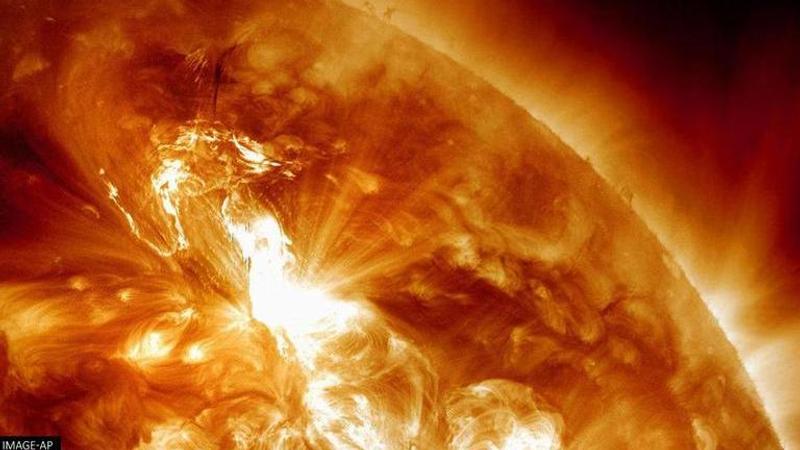Published 12:18 IST, November 15th 2021
'Cannibal' solar storms heading Earth's way to peak in 2025; can disrupt internet services
Scientists have reportedly observed and predicted that solar storms which will "cannibalise" each other are expected to take place in the coming four years.

Scientists have observed and predicted that solar storms which will "cannibalise" each other are expected to take place in the coming four years as activities in the sun have increased in recent days. A string of geomagnetic storms has rocked Earth during the last week as the new solar cycle of the sun started. The cycle will last for the next 11 years and the storms will peak in the year 2025, according to scientists, news website CodeList reported.
As per CodeList, on Halloween, October 31, a large amount of solar flare was witnessed. Following the flares, the earth was hit by a succession of coronal mass ejections (CME), which include the expulsion of electrically charged materials, plasma and the accompanying magnetic field into outer space from the solar corona.
CMEs threaten electrical systems, satellites
Further, these ejections might sometimes happen so regularly that the newer ones flow quicker than the original ones and later blend with the earlier slower ones. The National Oceanic and Atmospheric Administration's (NOAA) Space Weather Prediction Center's (SWPC) project coordinator, Bill Murtagh explained the occurrence by stating that the initial CME basically works its way across the 93 million miles and nearly clears the way for more CMEs to come in after it. Murtagh added that they use the term “cannibalise” for the CME that generally comes in the front which clears the path for others.
The NOAA organisation utilised the Deep Space Climate Observatory (Dscovr) - a spaceship placed a million miles away from Earth - and pointed towards the direction of the sun to study solar storms. When a CME strikes the spaceship, scientists know and can estimate its duration. They evaluate that the solar storm would last from 20 to 30 minutes before reaching the earth, CodeList reported. As per the scientists, CMEs pose a hazard to electrical systems and satellites, although they can usually be avoided.
“From this kind of level we’ve had hundreds of examples, so we have a good idea of what it will do to the network. we’re seeing some of these voltage irregularities … but this level of shock is very manageable,” Murtagh stated, according to CodeList.
CMEs can cause 'internet apocalypse'
Murtagh went on to say that the consequences of this form of "cannibal" CME can be catastrophic, and in a worst-case scenario, could lead to a severe geomagnetic storm occurrence. He added that the CMEs were not that huge but when two, three separate CMEs come together it can be severe.
Murtagh highlighted that under the worst-case scenario, a solar storm may cause the entire planet to experience an ‘internet apocalypse’. In that situation, the GPS power lines, cable connections, and satellites might be disrupted as well as damaged, and scientists warn that they do not know how durable the existing internet system is to solar activity.
A solar storm occurs when the Sun emits massive bursts of energy in the shape of solar flares and CMEs. At a velocity of nearly three million miles per hour, these occurrences propel a flood of electrical charges and magnetic forces toward the earth, according to CodeList.
(Image: AP)
Updated 12:18 IST, November 15th 2021



